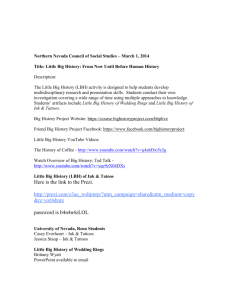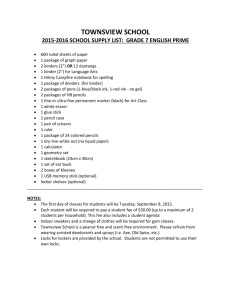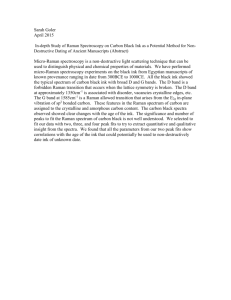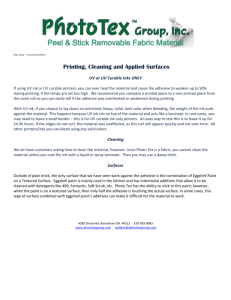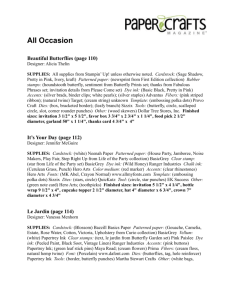Previous Tips
advertisement
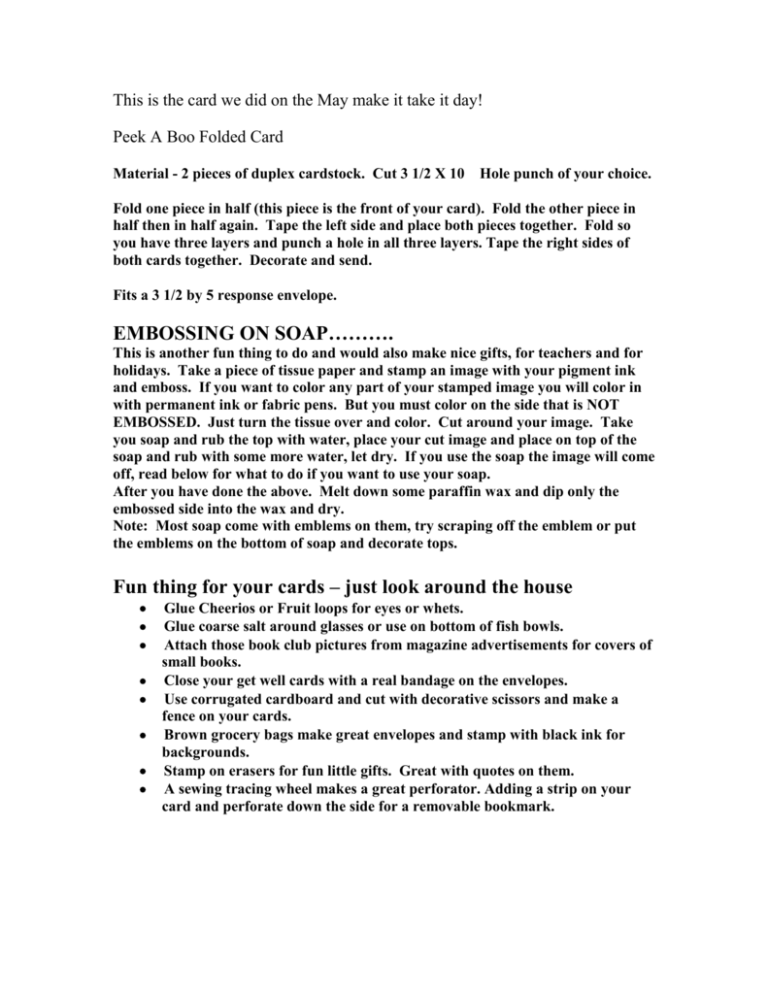
This is the card we did on the May make it take it day! Peek A Boo Folded Card Material - 2 pieces of duplex cardstock. Cut 3 1/2 X 10 Hole punch of your choice. Fold one piece in half (this piece is the front of your card). Fold the other piece in half then in half again. Tape the left side and place both pieces together. Fold so you have three layers and punch a hole in all three layers. Tape the right sides of both cards together. Decorate and send. Fits a 3 1/2 by 5 response envelope. EMBOSSING ON SOAP………. This is another fun thing to do and would also make nice gifts, for teachers and for holidays. Take a piece of tissue paper and stamp an image with your pigment ink and emboss. If you want to color any part of your stamped image you will color in with permanent ink or fabric pens. But you must color on the side that is NOT EMBOSSED. Just turn the tissue over and color. Cut around your image. Take you soap and rub the top with water, place your cut image and place on top of the soap and rub with some more water, let dry. If you use the soap the image will come off, read below for what to do if you want to use your soap. After you have done the above. Melt down some paraffin wax and dip only the embossed side into the wax and dry. Note: Most soap come with emblems on them, try scraping off the emblem or put the emblems on the bottom of soap and decorate tops. Fun thing for your cards – just look around the house Glue Cheerios or Fruit loops for eyes or whets. Glue coarse salt around glasses or use on bottom of fish bowls. Attach those book club pictures from magazine advertisements for covers of small books. Close your get well cards with a real bandage on the envelopes. Use corrugated cardboard and cut with decorative scissors and make a fence on your cards. Brown grocery bags make great envelopes and stamp with black ink for backgrounds. Stamp on erasers for fun little gifts. Great with quotes on them. A sewing tracing wheel makes a great perforator. Adding a strip on your card and perforate down the side for a removable bookmark. Melting Pearl Ex Supplies – Pearl Ex, Clear Embossing Ink and Powder, a stamp that has a flat background with and open design in center. Stamp your stamp with clear embossing ink on cardstock. Emboss with clear embossing powder, and heat. While still warm, press pearl Ex into image. Reheat with heat gun. The Pearl Ex will melt into the embossed piece. Gently wipe excess Pearl Ex away. Pearl Ex use as Paste Paper. Supplies – Pearl Ex, White Lumiere, sponge brush, decorative comb used for paste papers, light colored cardstock. In a small container mix one light color of Pearl Ex to a small amount of white Lumiere. In another container mix another darker color of Pearl Ex to a small amount of white Lumiere. Fill a sponge brush with the lighter of the mix and brush and cover all the cardstock. Fill the sponge brush with the darker mix and brush onto cardstock, less heavily, leaving the lighter color showing in some spots. Using a decorative comb rut it through the painted cardstock, wiggling the comb as you go. Let dry and use as a great background or a layering piece. Transparency and Tissue meet. Supplies – Transparency, Stazon Black ink pad, 2-3 colors of reinkers, Diamond Glaze, white tissue paper, and stamps of your choice. Stamp images on the transparency with Stazon ink, let dry. Turn sheet over and place 5-6 small drops of Diamond Glaze. Place 1 drop of each color of reinkers not to close together or they my get muddy. Gently spread the reinkers and Diamond Glaze with your finger until completely covered. While still wet take a piece of tissue paper larger then the transparency, crumple it and place over the Diamond Glaze. Pressing the tissue until saturated. Dry and cut out to use as a mat. Using Walnut Ink Supplies – Walnut Ink a dry crystal ink. Mix Walnut crystals with small amount of water in a container. More water gives you lighter look. Less water will give you a stronger ink look. Start with a light color of text weight or cardstock – tan, ivory or white they all work well. Wet the entire surface of the paper, using an eye dropper, drop several drops of ink on the paper spread with a paint brush and immediately spritz paper with alcohol and let dry. The result is great aged paper. Try this: Stamp with a non-smear ink before you add the Walnut Ink. You can stamp after for a different look but before looks more aged. There are many other ways to use Walnut Ink, this is a good start if you haven’t used Walnut Ink. Stamping on aluminum foil Stamp your image on a piece of paper of household aluminum foil with black pigment ink and emboss with black embossing powder. Mount this image on a sticky part of sticker paper. Cover the backs of the mounted image with incredible tape (tape that is sticky on both sides). Remove the tape backing and mount your image onto cardstock. Now to color the image, Gallery Glass paints work very well. You can get these in little pots at Michaels. Apply this paint with toothpicks using drips to apply your paint. We just got in Adirondack pens you can also color your images with these pens( they come in great colors). Water Embossing Using cardstock made of recycled or double sucky paper (only found at Stamp Fanci), stamp and emboss the image you want to water emboss. Paint the images you want to puff up with CLEAR WATER. Let the paper soak up enough water to make it soft and pliable but not mushy. Place you image stamped side down on top of a mouse pad or a foam pad. Using a jelly roll pen cap or a smooth round object, begin to pressure emboss the areas you want puffed. Rewet the right side of paper if necessary. When your image has been fully embossed, turn is over and use the watercolor technique of your choice to color in your stamped image. It is best to cut out and mount your water embossed image on your card rather than emboss it right onto the project ( the back of your water embossed image is not pretty) Glue around the edges of your image and attach it to your card. Watercolor Technique This is a great inexpensive method for water coloring. Use your marker, Tombow or LePlume will work but my favorite markers are the Brush markers (they have alot of color in them). Here is what you do... Scribble your colors on a plastic plate or a styrofoam meat tray. Touch your moistened brush to this ink and paint. Remember, watercolors will always dry slightly lighter than they appear when wet. However, while they are still wet, you may lighten the color by blotting it with a tissue. If necessary, add clear water with your paint brush and blot again. If you are uncertain of the final color, let is dry and add more color later if desired. One of the charms of watercolor is the look of softness and a light color is often more desirable.




